Spray paint, a widely used tool in both professional and do-it-yourself (DIY) projects, is highly regarded for its convenience and ability to provide a seamless finish. However, amidst these advantageous features lies a concern that is often overlooked – the potential toxicity of spray paint. This article aims to delve deeper into this topic by exploring the composition of spray paint, examining the various components that contribute to its toxicity, and ultimately addressing the question: Is spray paint toxic? By providing a comprehensive analysis, we can gain a better understanding of the potential risks associated with the use of spray paint and make more informed decisions when engaging in painting activities.
Spray Paint Ingredients
Aerosol colors usually contain three main ingredients: pigments, binders, and solvents. Pigments provide the color, while binders help the pigment adhere to the surface being painted. Solvents, usually made up of a variety of chemicals, keep the paint in a liquid state until it is sprayed. It is within these solvents where the potential toxicity of spray paint primarily resides.
Common solvents in spray paint can include toluene, xylene, and acetone, all of which present certain health risks if improperly handled or inhaled. Toluene, for example, is a colorless liquid that has a strong, sweet smell. Commonly utilized as a diluent in solvent spray coatings because of its ability to dissolve and disperse the pigments evenly. However, prolonged exposure to toluene vapor can lead to dizziness, nausea, and even damage to the central nervous system.
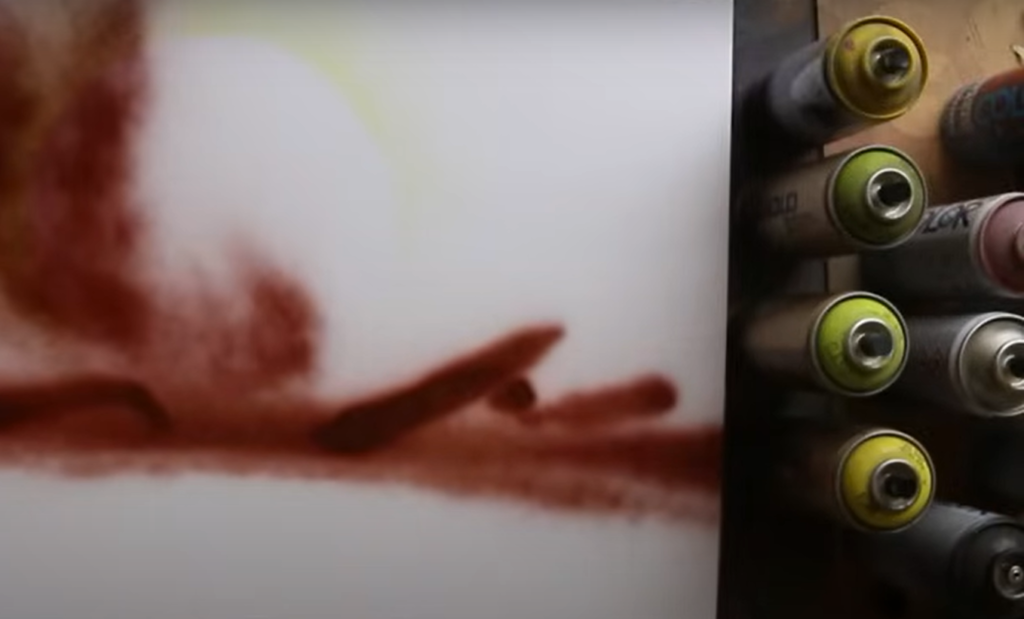
Xylene, another common solvent found in spray paint, is a clear, sweet-smelling liquid. It is used to help control the viscosity of the paint and improve its flow. However, prolonged exposure to xylene vapor can cause headaches, dizziness, and irritation to the eyes, nose, and throat.
Acetone, a flammable and combustible liquid, is often used as a solvent in spray paint due to its fast evaporation rate. It helps to keep the paint in a liquid state while it is sprayed onto a surface. However, inhalation of acetone vapor can irritate the respiratory system and cause drowsiness, headaches, and nausea.
By understanding the composition and potential hazards of spray paint, individuals can ensure their safety while enjoying the artistic possibilities it offers.[1]Spray Painting Safety and Health Benefits
Exposure to the chemical components found in solvents of spray paint can lead to several impacts on health. Low-level impact, which typically occurs during painting projects, can result in immediate symptoms such as dizziness, headaches, nausea, and eye, skin, and respiratory tract irritation. These symptoms can vary in severity depending on the level of exposure and individual sensitivity.
Long-term or chronic exposure, on the other hand, can have more serious health consequences. Prolonged inhalation or skin contact with these chemicals can lead to persistent respiratory issues, including bronchitis and asthma. The liver and kidneys may also be affected, as these organs are responsible for filtering and eliminating toxins from the body. Over time, chronic exposure to solvents in airborne paint can result in damage to these vital organs, potentially leading to long-lasting health problems.
Furthermore, the central nervous system can be negatively impacted by prolonged exposure to these chemicals. This can manifest as cognitive difficulties, memory loss, and even changes in behavior. Additionally, chronic inhalation of these harmful substances has been linked to an increased risk of developing certain types of cancer, such as lung cancer and leukemia.
To minimize the health risks associated with spray paint, it is crucial to take necessary precautions. Always use spray paint in a well-ventilated area to provide adequate air flow and reduce the concentration of fumes. Wearing appropriate protective equipment, such as masks or respirators, can also significantly reduce the inhalation of harmful chemicals. Additionally, using gloves and covering exposed skin can help prevent direct contact and absorption of solvents.
By being aware of the potential health hazards and taking necessary precautions, individuals can safely enjoy the benefits of spray paint while minimizing the risks to their well-being.[2]
Methods to Reduce Effects of Aerosol Paints
Make it a Habit to Look at Product Warning Labels
To further protect yourself from the potential toxicity of spray paint, it is imperative to cultivate a habit of thoroughly reading and understanding the warning labels on the cans. These labels not only provide vital information regarding the specific hazards associated with the product, but also offer crucial insights into the necessary protective measures and first-aid instructions in the event of exposure.
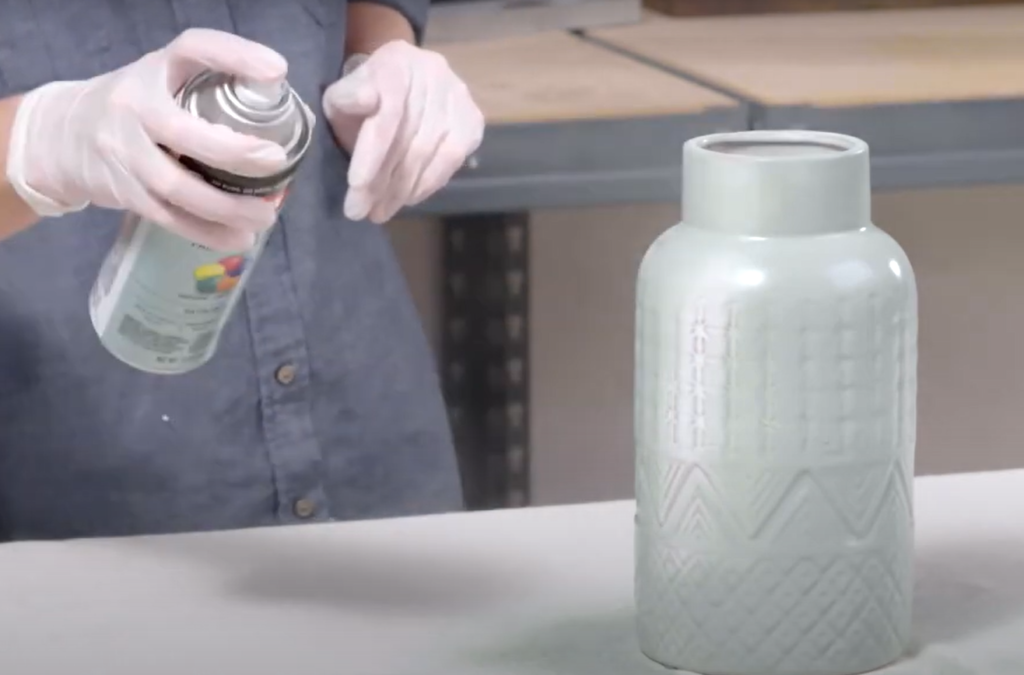
By law, manufacturers are required to include this information on their products, underscoring its importance. Therefore, it is not enough to merely glance over the labels; taking the time to read and comprehend their implications can make a significant difference in ensuring your safety and preserving your health when using spray paints or any chemical-based product.
Developing this simple yet effective habit will empower you with the knowledge needed to make informed decisions and take appropriate precautions, minimizing the risks associated with handling potentially hazardous substances. Ultimately, prioritizing safety and health through this conscientious practice will contribute to a more secure and worry-free experience when engaging with spray paints and similar products.
Wear Recommended Personal Protective Equipment
Wearing the recommended Personal Protective Equipment (PPE) is a critical and indispensable step in ensuring your safety when using spray paint.
It is crucial to ensure that the mask fits snugly and securely covers your nose and mouth completely, providing you with maximum protection.In addition to a respirator, it is highly recommended to wear safety goggles to safeguard your precious eyes from any irritating fumes that may be released during the painting process, as well as potential splashes of paint that could accidentally come into contact with your eyes. Your eyes deserve the utmost care and protection.
Moreover, don’t forget to equip yourself with gloves, preferably made of a non-permeable material like nitrile, to shield your skin from direct contact with the paint. These gloves act as an effective barrier, preventing any harmful chemicals from permeating through and causing any unwanted skin reactions or irritations. Your hands deserve to be shielded and preserved.
Lastly, it is advisable to consider wearing long-sleeves and pants to further minimize skin exposure to the paint. By covering more of your skin, you reduce the risk of any accidental contact and potential adverse effects. It’s always better to be safe than sorry.
Remember, it is of utmost importance to bear in mind that PPE is only effective if used correctly and in accordance with the manufacturer’s instructions. Take the time to familiarize yourself with how to properly wear and remove each piece of protective equipment, ensuring that you are well-versed in the correct usage. Prioritize your safety above all else when handling spray paint or any other chemical-based products. Your well-being matters.
Use appropriate spray enclosures and fume extractors when working
When working on large scale or professional projects involving spray paint, it is crucial to prioritize safety. In addition to wearing personal protective equipment, such as gloves and goggles, there are other essential safety measures to consider.
One important aspect is using appropriate spray enclosures and fume extractors. A well-designed spray booth or enclosure provides a designated, controlled environment for spray painting tasks. Not only does this help contain the spread of harmful aerosols and particles, but it also ensures that the surrounding area remains unaffected.
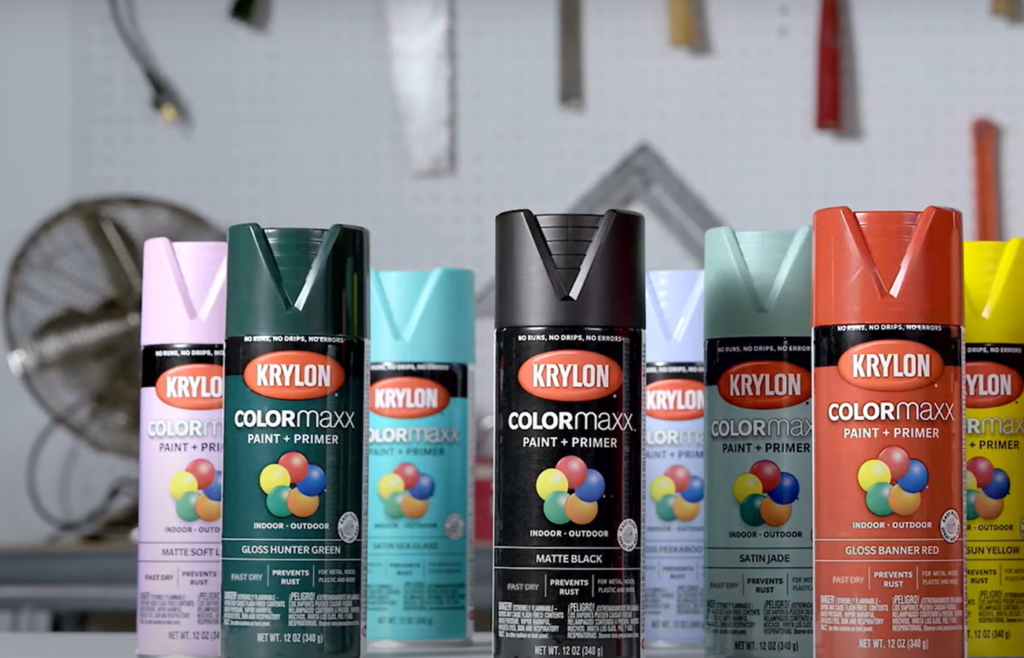
Effective ventilation systems are a key component of these enclosures. They ensure a constant flow of air, reducing the concentration of toxic fumes. This is particularly important when working with spray paint, as the fumes can be hazardous if inhaled.
Another safety measure to consider is using a fume extractor. These devices are specifically designed to pull in air from the surrounding environment, filter out harmful substances, and then release the cleaned air back into the atmosphere. By doing so, they significantly reduce the risk of inhaling harmful spray paint fumes.
It’s important to note that using appropriate safety equipment, including spray enclosures and fume extractors, is not a substitute for personal protective equipment (PPE). Rather, it serves as an additional layer of defense to minimize exposure to potentially hazardous fumes.
By prioritizing safety and implementing these measures, you can ensure a safer working environment when dealing with spray paint projects.
Use a Spray Booth
A spray booth is an incredibly valuable tool for ensuring safe and efficient spray painting. It is specifically designed to contain and effectively remove the fumes and overspray that are produced during the painting process. By providing a controlled environment, a spray booth not only safeguards the user but also protects the surrounding area from potential hazards.
The functioning of a spray booth relies on a well-designed system. It utilizes a powerful fan and a duct system to effectively pull the fumes away from the work area. These fumes are then passed through a series of filters, which efficiently trap and prevent the release of harmful substances into the air. This ensures that the air quality is maintained at a safe and healthy level.
When selecting a spray booth, it is important to consider the size and type of projects you typically undertake. You should also take into account the available space in your workshop to ensure that the spray booth fits seamlessly into your working environment. Additionally, regular maintenance is crucial for optimal functionality. The filters should be replaced at recommended intervals, and the entire system should be inspected regularly to ensure its efficiency and effectiveness.
It is essential to remember that a spray booth is just one component of a comprehensive approach to safety when working with spray paint. Always prioritize the use of appropriate personal protective equipment (PPE) and adhere to the best practices for the safe use and storage of spray paint materials. By following these guidelines, you can create a safe and productive working environment for all your spray painting projects.
Use a Low-VOC Paint
Another effective way to significantly reduce the risks associated with using spray paint is by opting for Low-Volatile Organic Compound (Low-VOC) paints. Unlike traditional spray paints that contain high levels of VOCs – chemicals that readily evaporate at room temperature and contribute to the formation of harmful fumes – Low-VOC paints are specially formulated to minimize the amount of these harmful compounds, making them a safer and more environmentally friendly option.
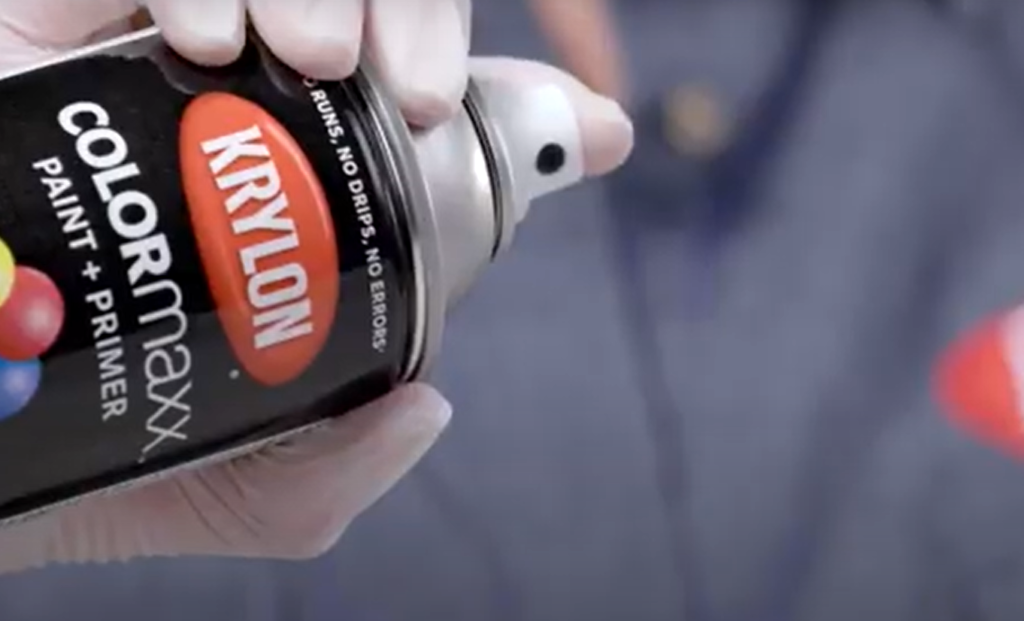
Low-VOC paints are designed with advanced technology to decrease the release of volatile organic compounds, which not only benefits human health but also helps to mitigate air pollution. By choosing Low-VOC paints, you can contribute to creating a healthier indoor and outdoor environment. These paints still contain a certain level of VOCs, but the quantity is significantly lower compared to standard paints, minimizing the potential health risks.
In addition to being safer, Low-VOC paints also offer other advantages. They typically have less odor, reducing discomfort and unpleasant smells when painting indoors. This is particularly beneficial if you’re working on a project in a confined or poorly ventilated space. Moreover, many Low-VOC paints are available in a wide range of colors and finishes, ensuring that you have plenty of options to achieve the desired aesthetic for your project.
It’s still important to follow proper safety measures, such as wearing appropriate personal protective equipment (PPE) and working in well-ventilated areas, whenever you use any type of spray paint. By taking these precautions, you can further minimize any potential risks and ensure a safer painting experience.In conclusion, opting for Low-VOC paints is a responsible choice that not only reduces the negative impact on your health and the environment but also provides a more pleasant painting experience. By considering the use of Low-VOC paints and following safety guidelines, you can enjoy the benefits of spray painting while minimizing potential risks.[2]
FAQ
Is spray paint toxic to breathe?
Yes, breathing in spray paint fumes can be harmful, particularly if the paint contains high levels of volatile organic compounds (VOCs). These VOCs are chemicals that easily evaporate at room temperature, and when inhaled, they can have detrimental effects on our health.
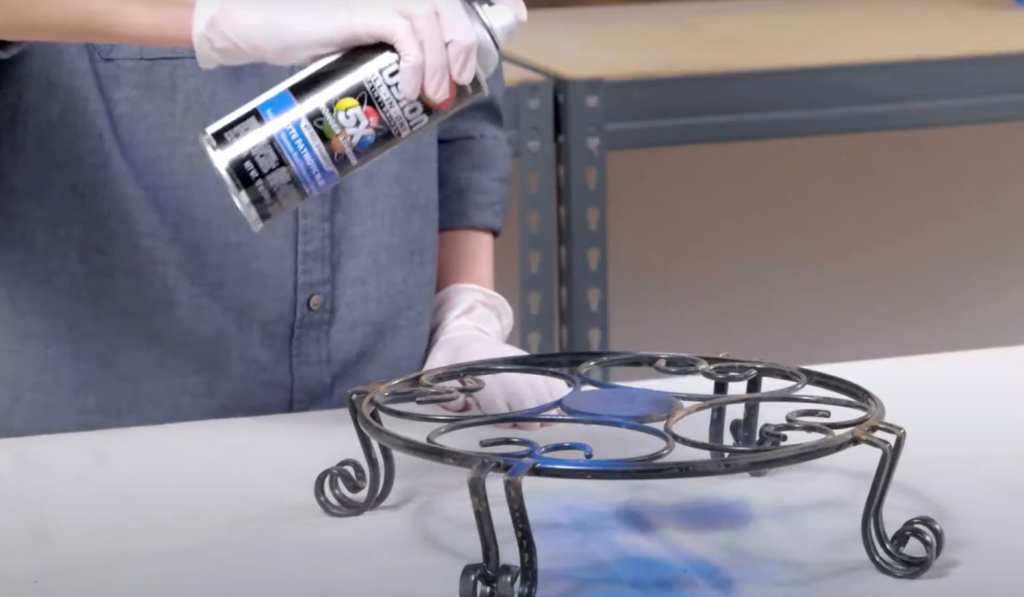
Exposure to these fumes can lead to a variety of health problems, ranging from mild irritations such as headaches, dizziness, or nausea, to more serious issues like damage to the central nervous system, liver, and kidneys. The long-term consequences of chronic exposure to VOCs can include respiratory issues and, in severe cases, even cancer.
To ensure your safety, it is crucial to take necessary precautions to minimize direct inhalation of spray paint fumes. This includes using appropriate personal protective equipment, such as masks or respirators, to filter out harmful particles. Additionally, ensuring proper ventilation in the workspace or using a spray booth can help to dissipate the fumes and reduce exposure. It is also important to follow all safety guidelines provided by the paint manufacturer, such as working in a well-ventilated area and avoiding prolonged exposure.
By taking these precautions and being aware of the potential risks associated with spray paint fumes, you can protect yourself and minimize any potential health hazards.
Is spray paint toxic after it dries?
Post-application, as the spray paint dries, it may initially seem harmless; however, it’s crucial to note that this is not entirely the case. While the level of toxicity significantly reduces once the paint is dry, some residual risks persist. The dried paint can continue to release small amounts of volatile organic compounds (VOCs) into the air over an extended period, a process referred to as ‘off-gassing’. It’s important to understand that off-gassing can persist for several years, albeit at significantly lower levels compared to during the application phase. This continuous release of VOCs into the air can contribute to indoor air pollution and may potentially cause discomfort or health issues, especially for individuals who are particularly sensitive or allergic to these compounds.
However, it’s worth mentioning that the risk associated with off-gassing is considerably less when the paint is dry compared to when it is wet. To further minimize potential risks, it is advisable to allow painted objects to dry in a well-ventilated area, preferably outdoors, to facilitate better air circulation and reduce the concentration of VOCs indoors. Additionally, it is recommended to exercise caution when using spray-painted objects, especially those painted with high-VOC paints, in confined spaces or around individuals with chemical sensitivities.
As always, it’s important to emphasize that different spray paints may have varying levels of toxicity and specific instructions for safe usage. To obtain accurate and comprehensive information, it is crucial to refer to the manufacturer’s instructions and safety data sheets for specific guidance and precautions. By being informed and taking necessary precautions, you can ensure a safer and healthier environment.
How long are spray paint fumes toxic?
The duration of toxicity of spray paint fumes can vary depending on several factors, including the type of paint used, the amount applied, the level of ventilation in the area, and individual sensitivities. Generally, the concentrations of harmful volatile organic compounds (VOCs) are highest during and immediately after painting. It is important to note that different types of paint can have different levels of VOC emissions, with some paints containing higher levels of toxic compounds than others.
Typically, it can take anywhere from a few hours to a couple of days for the fumes to dissipate, but in some cases, especially with paints that have high VOC levels, the off-gassing can continue for weeks or even months after application. This is why it is advisable to avoid spending prolonged periods in the freshly painted area until the smell of paint has completely disappeared, indicating that the majority of VOCs have evaporated.
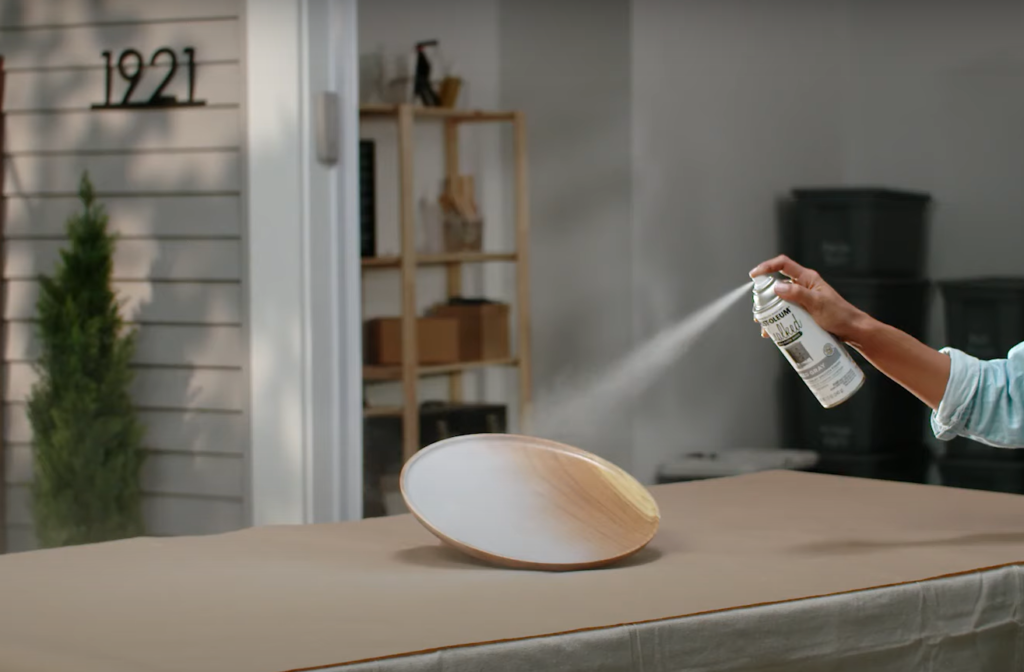
Proper ventilation is crucial in speeding up the process of fume dissipation and reducing the risk of exposure to toxic fumes. Opening windows and doors, using fans, and ensuring a constant flow of fresh air can help in removing the fumes more quickly. It is also recommended to wear a mask and protective clothing during painting and while in the vicinity of freshly painted areas to minimize inhalation and skin contact with the paint and its fumes.
Always refer to the specific product’s safety data sheet for more detailed information on the recommended drying and ventilation times, as well as any additional precautions or safety measures to be taken when working with the specific paint product. Being aware of these factors and following best practices can help ensure a safer and healthier environment during and after painting projects.
How toxic is spray paint on skin?
Direct contact of spray paint with skin is not as hazardous as inhalation, but it can still lead to problems. Most spray paints contain solvents and propellants, such as volatile organic compounds (VOCs), which can cause skin irritation and dermatitis on prolonged contact. These VOCs can disrupt the skin’s natural barrier function, leading to dryness, redness, and inflammation.
In addition to skin irritation, some individuals may experience an allergic reaction to specific components of the spray paint. This allergic response can manifest as itching, redness, rash, and in severe cases, blisters. It’s important to be aware of any allergies or sensitivities to certain chemicals present in spray paint to avoid potential adverse reactions.
Moreover, the skin is capable of absorbing harmful chemicals over time. Prolonged or repeated exposure to spray paint without adequate protection can result in the absorption of toxic substances into the body. This absorption may contribute to more serious health problems, including respiratory issues, organ damage, and even certain types of cancer.
To minimize the risks associated with direct skin contact, it is advisable to always use proper personal protective equipment when working with spray paint. This includes gloves, long-sleeved clothing, and a respirator if necessary. If spray paint does come into contact with the skin, it is recommended to promptly wash the affected area with soap and warm water. This helps to remove any residual paint and minimize the absorption of potentially harmful substances.
By taking these precautions and being mindful of the potential risks, individuals can ensure safer handling of spray paint and protect their skin from irritation, allergic reactions, and long-term health effects.
Is it safe to spray paint without a mask?
No, it is absolutely not advisable to use spray paint without wearing a mask or a proper respirator. The mask serves as a crucial barrier, effectively safeguarding against the inhalation of harmful fumes that are released during the spray painting process. These fumes often contain volatile organic compounds (VOCs), which can pose significant health risks. Exposure to VOCs can result in a range of adverse health effects, including headaches, dizziness, and nausea. However, the potential consequences extend beyond these immediate symptoms. Prolonged exposure to VOCs can lead to more severe health issues, such as damage to the central nervous system, liver, and kidneys.
Even if a paint is labeled as “Low-VOC,” it still releases some quantity of these hazardous compounds. Therefore, it is crucial to prioritize safety by wearing a mask or a respirator when using spray paint. Specifically, using a mask or respirator designed to filter out chemical vapors is of utmost importance. This critical safety measure ensures that you are adequately protected from the harmful effects of the fumes.
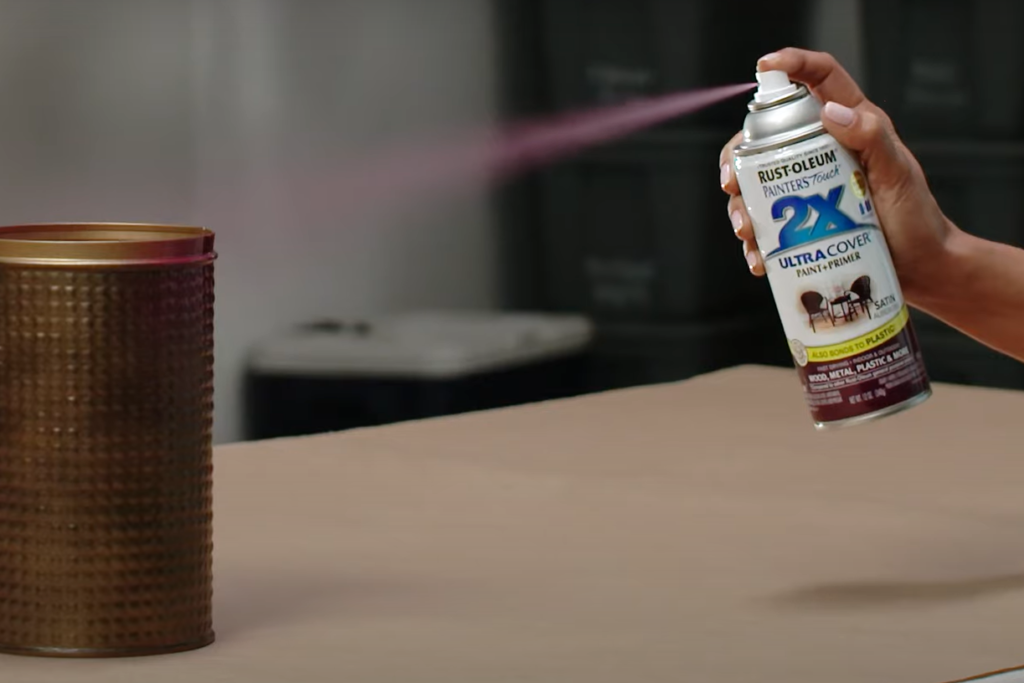
Furthermore, it is equally essential to ensure that the mask fits well, providing complete coverage of the nose and mouth. This ensures optimal protection and minimizes the risk of exposure to any potentially hazardous substances.
While wearing a mask is an important safety measure when using spray paint, it should not be considered a substitute for working in well-ventilated areas or following other safety guidelines. It is crucial to work in areas with proper ventilation and adhere to all recommended safety practices to minimize the risks associated with spray painting.
By prioritizing safety and following these precautions, you can confidently engage in spray painting while minimizing potential health hazards.
Is spray paint safe to touch?
Once spray paint has completely dried, usually after 24 to 48 hours, it is generally safe to touch without any major risks. During the drying process, the solvents in the paint evaporate, reducing the levels of harmful volatile organic compounds (VOCs) emitted into the air. This not only benefits your health but also helps protect the environment.
However, it is important to note that while dry spray paint is generally safe to touch, you should still avoid direct contact with wet or uncured paint. This is because wet paint may still contain higher levels of VOCs and other potentially harmful chemicals. Direct contact with wet paint can lead to skin irritation, potential allergic reactions, or even the absorption of harmful chemicals into the skin.
Even with dry paint, repeated or prolonged contact may cause mild skin irritation in some individuals. To minimize any potential risks, it is always recommended to use appropriate personal protective equipment, such as gloves, when handling freshly painted objects until they are fully cured.
In addition to personal protection, it is also important to consider the environment in which freshly painted objects are placed during the drying process. Ideally, these objects should be left in a well-ventilated area, preferably outdoors, until completely dry. This helps to minimize the risk of off-gassing, which occurs when VOCs are released into the air as the paint cures. By allowing for proper ventilation, you can help ensure that any lingering VOCs are dispersed safely.
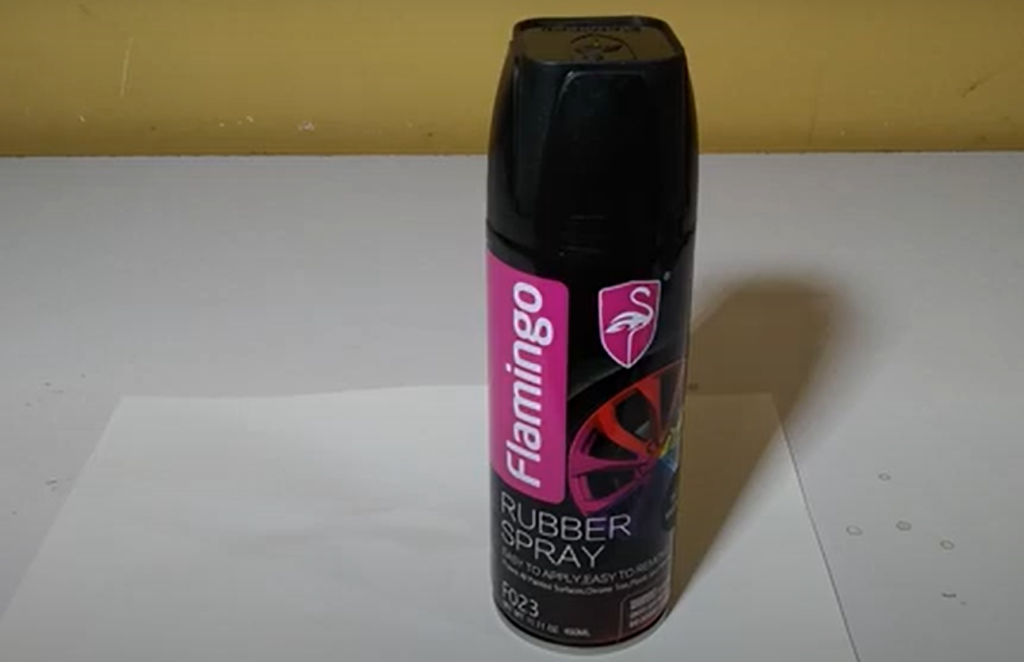
Remember, it is crucial to always follow the manufacturer’s instructions on the paint can for specific safety measures and drying times. Each paint product may have unique characteristics and drying requirements, so it is important to adhere to the guidelines provided.
By being mindful of these details and taking appropriate precautions, you can safely enjoy the benefits of spray paint while minimizing any potential risks to your health and the environment.
Useful Video: Toxic Gassiers – SPRAY PAINTING ART – by Skech
Conclusion
While spray paint provides a convenient and efficient way to cover surfaces, its usage comes with inherent health risks due to the presence of volatile organic compounds and other potentially harmful chemicals. The toxicity of spray paint fumes can range from mild to severe, depending on factors such as the type of paint used, the amount applied, and the level of ventilation. It’s imperative to use proper personal protective equipment, maintain good ventilation, and follow all safety measures outlined by the manufacturer. The risk does significantly decrease when the paint is dry, but some level of off-gassing can continue for several years. Therefore, awareness, caution, and adherence to safety guidelines should be paramount whenever using spray paint.
References:
- https://www.lahacienda.com/blog/why-is-spray-paint-addictive
- https://www.sentryair.com/blog/industry-applications/aerosol-spray-paint/the-hazards-of-spray-paint-fumes/


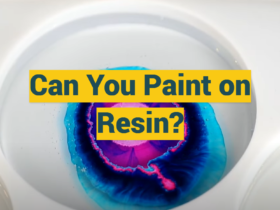

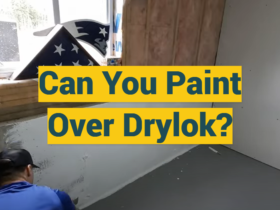
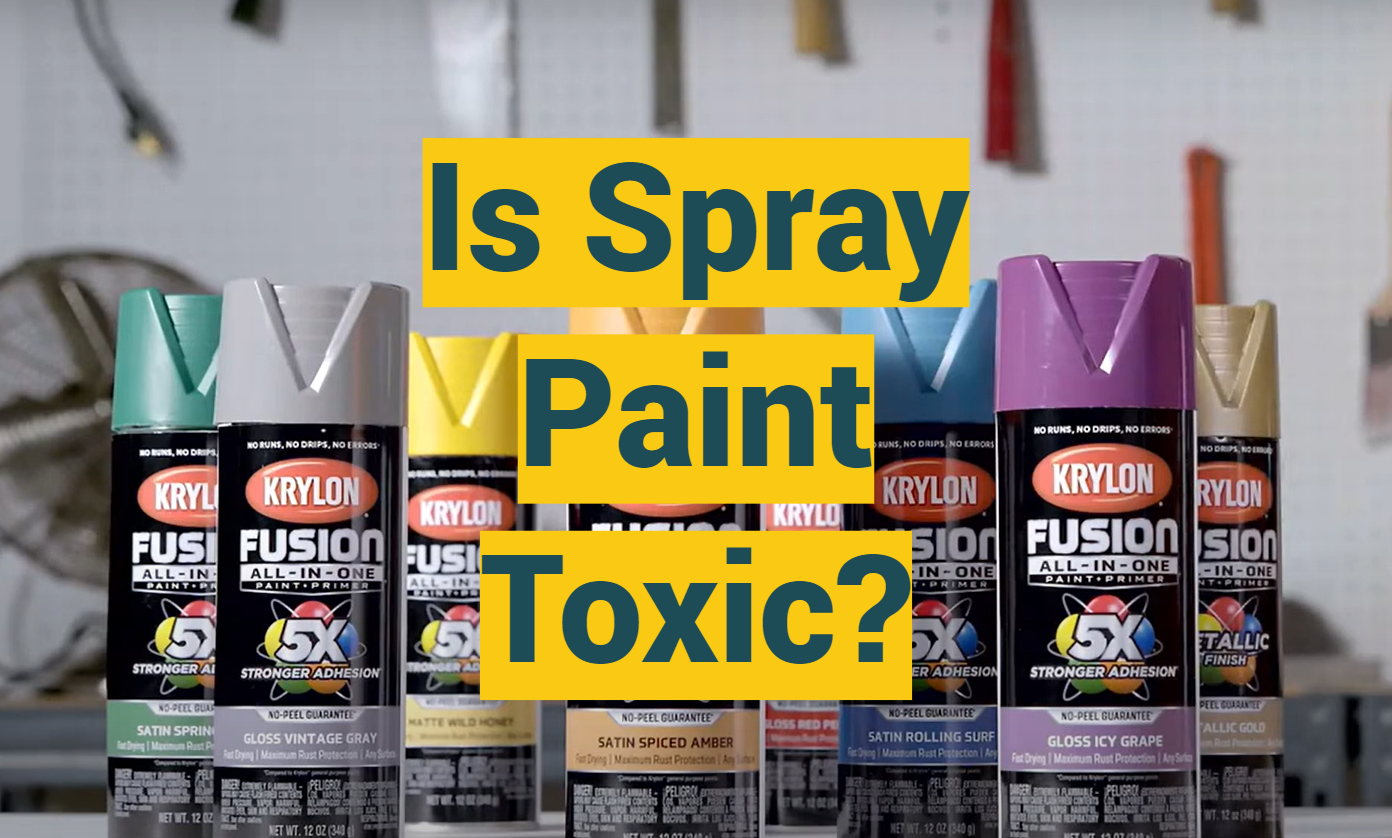

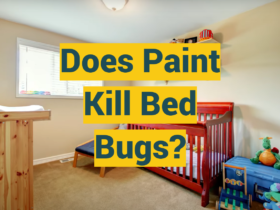


Leave a Review